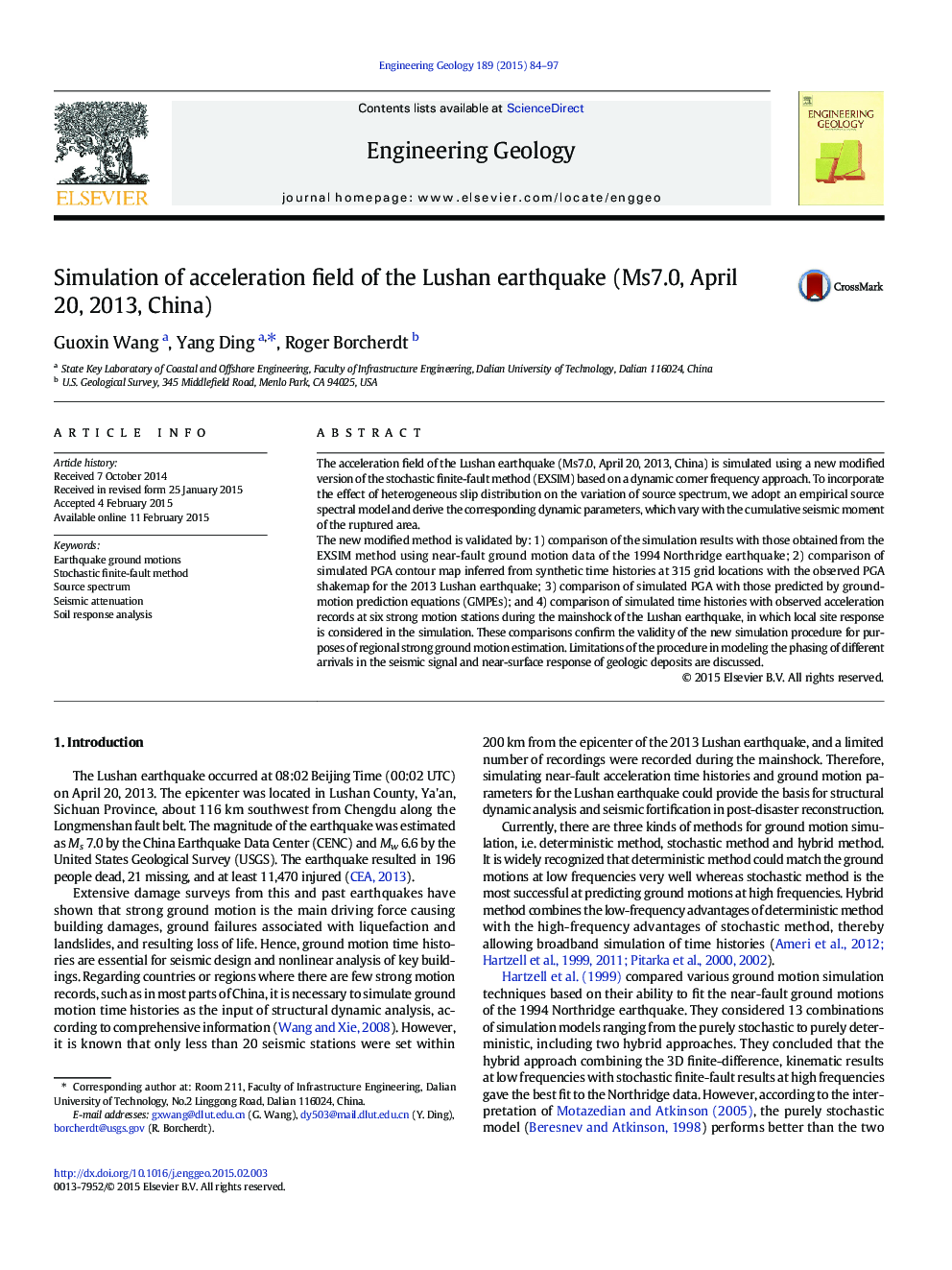| Article ID | Journal | Published Year | Pages | File Type |
|---|---|---|---|---|
| 4743319 | Engineering Geology | 2015 | 14 Pages |
•We propose a modified version of the stochastic finite-fault method (EXSIM).•The new method is validated using ground motions from the Northridge earthquake.•We simulate the near-fault acceleration field of the 2013 Lushan earthquake.•Stochastic finite-fault method is effective in modeling near-fault ground motions.
The acceleration field of the Lushan earthquake (Ms7.0, April 20, 2013, China) is simulated using a new modified version of the stochastic finite-fault method (EXSIM) based on a dynamic corner frequency approach. To incorporate the effect of heterogeneous slip distribution on the variation of source spectrum, we adopt an empirical source spectral model and derive the corresponding dynamic parameters, which vary with the cumulative seismic moment of the ruptured area.The new modified method is validated by: 1) comparison of the simulation results with those obtained from the EXSIM method using near-fault ground motion data of the 1994 Northridge earthquake; 2) comparison of simulated PGA contour map inferred from synthetic time histories at 315 grid locations with the observed PGA shakemap for the 2013 Lushan earthquake; 3) comparison of simulated PGA with those predicted by ground-motion prediction equations (GMPEs); and 4) comparison of simulated time histories with observed acceleration records at six strong motion stations during the mainshock of the Lushan earthquake, in which local site response is considered in the simulation. These comparisons confirm the validity of the new simulation procedure for purposes of regional strong ground motion estimation. Limitations of the procedure in modeling the phasing of different arrivals in the seismic signal and near-surface response of geologic deposits are discussed.
